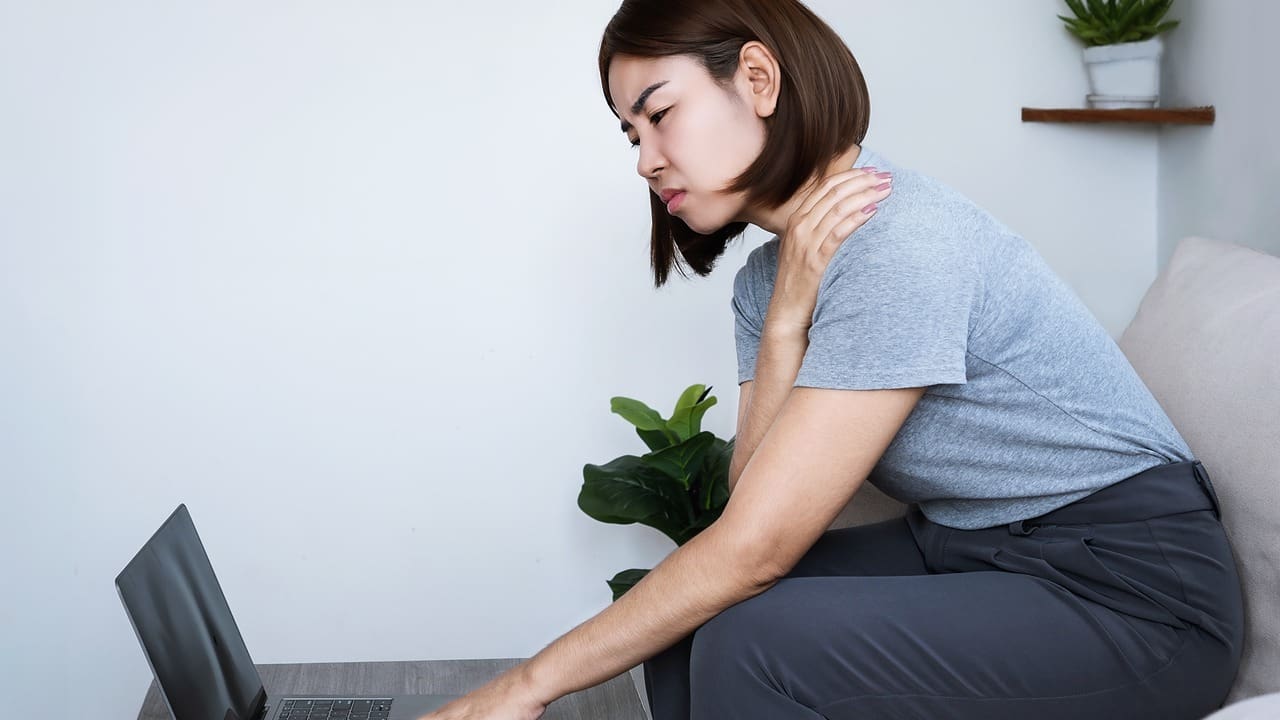Posture Disorders: Causes, Symptoms, and Effective Treatment Methods
Posture Disorders affect everyone differently, as each person's body type and ideal alignment are unique. While perfect posture is rare in daily life, maintaining good posture is important it helps reduce stress on muscles, joints, and ligaments.
Poor posture often develops through everyday habits, such as prolonged computer or phone use, which can disrupt the alignment of the spine, head, shoulders, and hips. If left unchecked, Posture Disorders can lead to noticeable physical changes (like a straight neck or hunched back), discomfort, and even serious symptoms. Fortunately, posture problems can often be managed and improved through lifestyle changes, physiotherapy, and targeted exercises under the guidance of a physiotherapist.

What are the Diseases of Posture Disorder?
Posture disorder usually develops in daily life due to the way of standing, walking and sitting. But it has also been observed that posture disorders develop due to some diseases. These diseases can be listed as follows.
- Scoliosis
- Scheuermann's Disease
- Osteoporosis
- Muscular dystrophia
- Marfan and Ehlers-Danlos syndrome
Posture Disorder Surgery
For severe posture disorders that do not respond to conservative treatments, surgery may be recommended to relieve symptoms and prevent further progression. Surgical intervention is only considered when the potential benefits outweigh the risks. In most cases, posture disorder surgeries focus on correcting significant spinal deformities.
For example, kyphosis surgery is performed when the spinal curve is severe, causes persistent pain, or interferes with essential functions like breathing or nerve activity. The most common technique, spinal fusion, involves joining affected vertebrae using rods, screws, and hooks to straighten and stabilize the spine. In flat back syndrome, an interbody fusion method may also be used to restore proper spinal alignment.
How is Posture Disorder Recognized?
If you notice symptoms of a posture disorder or experience reduced quality of life, it's important to consult a healthcare provider. Diagnosis typically begins with a physical examination, where the doctor will assess balance, mobility, and range of motion. If a spinal curvature is suspected, the examination may involve observing your posture while standing and lying down to help distinguish between postural and structural causes.
To confirm the diagnosis, imaging techniques such as X-rays, CT scans, or MRI may be used to get a detailed view of the spine and surrounding structures. In certain cases, especially if kyphosis is found, the doctor may also order blood tests or bone density scans to rule out underlying conditions like tuberculosis. Once all assessments are completed, an accurate diagnosis and personalized treatment plan can be made.
What are the Types of Posture Disorders?
It's easy to develop poor posture habits in everyday life whether from carrying a heavy backpack, spending long hours at a computer, leaning over a phone, or constantly wearing high heels. These habits can contribute to a range of posture problems, each with its own characteristics. The four most common types are:
- Forward Head (Tech Neck): Here, the head and ears project forward in front of the body's vertical centerline, often caused by prolonged screen time or age-related loss of upper body muscle strength.
- Kyphosis: This condition is marked by an exaggerated curve in the upper back, giving a hunched or rounded appearance, and can lead to back pain and tenderness. Kyphosis is linked to poor posture or habitual slouching.
- Flatback: Flatback occurs when the natural lower back curve is lost, making the lower back appear flat and causing the person to lean forward. It may be congenital, caused by arthritis or spinal surgery, and can make standing for long periods difficult.
- Lordosis: Characterized by the pelvis and hips positioned in front of the body's midline, this posture exaggerates the inward curve of the lower back. Prolonged sitting that weakens core muscles can lead to lordosis, which makes someone appear to lean back with the abdomen and buttocks protruding.
Recognizing the type and cause of posture disorder is the first step toward effective treatment and healthy body alignment.
Does Posture Disorder Cause Scoliosis?
While posture disorders can negatively affect your overall health, simply sitting or standing with poor posture does not cause scoliosis. Scoliosis typically develops due to genetic factors or changes in the muscles and skeleton. However, people who have scoliosis may also develop posture-related problems as a result of the spinal curvature.
The Relationship between Posture Disorders and Neck Pain
Posture disorders can cause a variety of symptoms, with neck pain being one of the most common. Poor posture puts extra strain on the muscles and ligaments supporting the neck, often leading to discomfort or pain”particularly when the head is habitually positioned forward (as seen with tech neck or slouched posture).
In addition to posture issues, certain lifestyle factors can worsen or trigger neck pain. These include working long hours at a computer without proper ergonomics, frequently hunching or looking down at a phone, stress or anxiety that causes shoulder tension, and sustained poor body positioning. Addressing both posture and these daily habits is important for reducing the frequency and severity of neck pain.
Is Posture Disorder Treatable?
Posture disorders are treatable health concerns. After being evaluated by an orthopedist, most patients are referred to physiotherapists for personalized care. Significant improvements can often be achieved through physiotherapy, which may include tailored exercise and stretching routines, as well as guided yoga sessions. These therapies help restore balance and support healthy posture based on each person's body structure.
In some cases, your doctor or physiotherapist may also recommend the use of posture correction devices, support braces, or taping”especially for reducing lordosis. Shoe lifts can be helpful for patients needing walking correction.
Lifestyle changes play a crucial role in managing posture disorders. Proper ergonomic setup at work, keeping your head and phone aligned, and choosing an orthopedic bed to support spinal health at night are all important. In more advanced or severe cases, surgical intervention may be necessary.
What Happens If the Posture Disorder Is Not Treated?
If the posture disorder progresses and is not treated, the severity of the symptoms that develop due to the posture disorder increases. Symptoms that seriously affect the quality of daily life, especially back pain and neck pain, may develop.
Along with poor posture, changes in posture might be observed in people in a way that may also be seen externally. Serious symptoms may develop, such as rounded shoulders, hunched back, difficulty balancing or difficulty standing.
It is necessary to ensure the treatment of the posture disorder without progression. Liv Hospital takes an approach to posture disorders in the light of up-to-date data and works diligently to provide the most effective treatment to its patients
If posture disorders are not treated, symptoms can worsen and significantly reduce quality of life”often manifesting as chronic back and neck pain, obvious changes in body alignment (such as rounded shoulders or hunching), and difficulty with balance or standing. Early and effective treatment is essential to prevent progression. Liv Hospital stays at the forefront of posture correction, using the latest medical advancements to provide the highest quality care.
Breast reduction surgery is a cosmetic procedure offered at Liv Hospital Plastic, Reconstructive, and Aesthetic Surgery for a variety of reasons. The surgery is designed to reduce, lighten, and reshape the breasts, benefiting both women and men who seek increased comfort or improved body proportions.
* Liv Hospital Editorial Board has contributed to the publication of this content . * Contents of this page is for informational purposes only. Please consult your doctor for diagnosis and treatment. The content of this page does not include information on medicinal health care at Liv Hospital .
For more information about our academic and training initiatives, visit Liv Hospital Academy
Frequently Asked Questions
What are posture disorders?
Posture disorders occur when the body’s alignment is disrupted, affecting the spine, shoulders, and hips. Poor posture can develop from daily habits like sitting at a computer or leaning over a phone for long hours.
What causes posture disorders?
Posture problems may stem from poor habits or medical conditions such as scoliosis, Scheuermann’s disease, osteoporosis, muscular dystrophy, and Marfan or Ehlers-Danlos syndrome.
How are posture disorders diagnosed?
Diagnosis begins with a physical exam and may include X-rays, CT scans, or MRI imaging to assess spinal alignment and detect structural deformities.
Can posture disorders cause scoliosis?
No. Poor posture alone does not cause scoliosis, but individuals with scoliosis may also develop posture-related issues due to spinal curvature.
How are posture disorders treated?
Treatment typically includes physiotherapy, targeted exercises, posture correction devices, or braces. In severe cases, surgery may be necessary to correct spinal deformities.
Why choose Liv Hospital for posture disorder treatment?
Liv Hospital offers advanced physiotherapy programs, modern diagnostic imaging, and personalized treatment plans to restore healthy alignment and improve quality of life.


